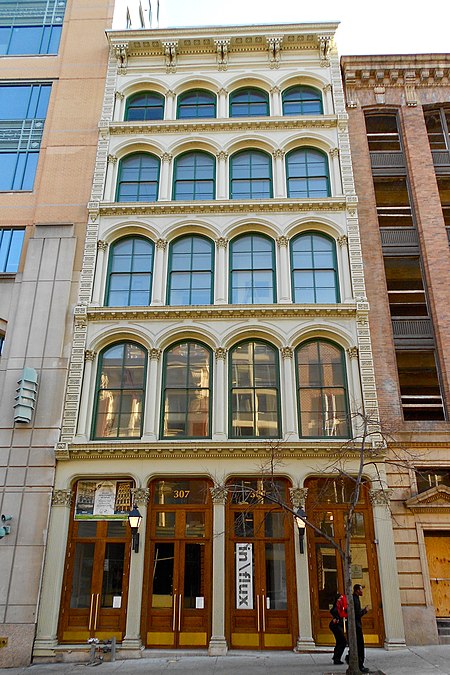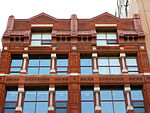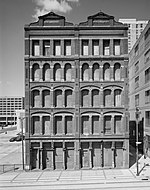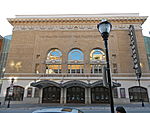The Great Baltimore Fire raged in Baltimore, Maryland from Sunday, February 7, to Monday, February 8, 1904. More than 1,500 buildings were completely leveled, and some 1,000 severely damaged, bringing property loss from the disaster to an estimated $100 million. 1,231 firefighters helped bring the blaze under control, both professional paid truck and engine companies from the Baltimore City Fire Department (B.C.F.D.) and volunteers from the surrounding counties and outlying towns of Maryland, as well as out-of-state units that arrived on the major railroads. It destroyed much of central Baltimore, including over 1,500 buildings covering an area of some 140 acres (57 ha).
From North Howard Street in the west and southwest, the flames spread north through the retail shopping area as far as Fayette Street and began moving eastward, pushed along by the prevailing winds. Narrowly missing the new 1900 Circuit Courthouse (now Clarence M. Mitchell, Jr. Courthouse), fire passed the historic Battle Monument Square from 1815 to 1827 at North Calvert Street, and the quarter-century-old Baltimore City Hall (of 1875) on Holliday Street; and finally spread further east to the Jones Falls stream which divided the downtown business district from the old East Baltimore tightly-packed residential neighborhoods of Jonestown (also known as Old Town) and newly named "Little Italy". The fire's wide swath burned as far south as the wharves and piers lining the north side of the old "Basin" (today's "Inner Harbor") of the Northwest Branch of the Baltimore Harbor and Patapsco River facing along Pratt Street.
It is considered historically the third worst conflagration in an American city, surpassed only by the Great Chicago Fire of 1871, and the San Francisco Earthquake and Fire of 1906. Other major urban disasters that were comparable (but not fires) were the Galveston Hurricane of 1900 and most recently, Hurricane Katrina that hit New Orleans and the Gulf of Mexico coast in August 2005. One reason for the fire's long duration involved the lack of national standards in firefighting equipment. Despite fire engines from nearby cities (such as Philadelphia and Washington, D.C. as well as units from New York City, Virginia, Wilmington, and Atlantic City) responding with horse-drawn pumpers, wagons and other related equipment (primitive by modern-day standards, but only steam engines were motorized in that era) carried by the railroads on flat cars and in box cars, many were unable to help since their hose couplings could not fit Baltimore's fire hydrants.
Much of the destroyed area was rebuilt in relatively short order, and the city adopted a building code, stressing fireproof materials. Perhaps the greatest legacy of the fire was the impetus it gave to efforts to standardize firefighting equipment in the United States, especially hose couplings.










